Description
When did The Beatles break up? The matter first became public on April 10, 1970, when Paul announced in a magazine that he was leaving the band. On December 30, 1970, Paul sued the other three members in the London High Court, seeking the dissolution of The Beatles and the dissolution of Apple. On March 12, 1971, the court accepted the lawsuit and the dissolution was legally decided. However, these were announcements, steps toward it, and legal decisions. For many Japanese, the end of the Greater East Asian War is recognized as August 15, 1945, when the Emperor’s radio broadcast was made, but peace negotiations had been sounded out through the Soviet Union before that, and the surrender decision made at the Imperial Conference in the presence of the Emperor on August 10 can be said to be the actual end of the war. The legal surrender was on September 2, when Shigemitsu Mamoru signed the surrender document on the USS Missouri. The Soviet Union abrogated the Japan-Soviet Neutrality Pact and invaded the Northern Territories after August 15, when Japan disarmed, but the Soviet Union justified it by saying that they were still at war before September 2. It is difficult to determine the date. Let’s go back to the Beatles. There are various theories about how the Beatles broke up, but all of them are probably correct, and it can only be said that it was the result of a complex mix of events. And I think each member felt the seeds of this from the time of the White Album. Until then, the four of them had been proud of their strong unity, but after the White Album, their relationship changed to one that required effort to maintain. I think that the Get Back sessions in 1969 were a bad example of this effort. The Get Back sessions were conducted with the concept of filming the recording of new songs and making a movie, and performing a live show of only new songs, with the highlights of the movie being the scenes. Filming and recording took place at Twickenham Studios from January 2nd to 16th, 1969, and at Apple Studios from January 20th to 31st. The famous Rooftop Concert took place on the 30th. The film “Let It Be” was made from the footage of this session, but the contents are gloomy, and even the tense scenes between Paul and George are vividly recorded, and it is said that George was reluctant to release it on DVD when he was alive. The recorded material was entrusted to Phil Spector, not George Martin, who had been in charge of production until then, and released as the album “Let It Be”. George and John were very satisfied with Phil Spector’s work, and they entrusted him with producing their solo albums, but Paul was furious that Phil Spector had ruined his work by over-embellishing it. In any case, it can be said that this Get Back session, including its results, was the month that determined the rift between Paul and the other members. Looking at the schedule of the Get Back sessions again, the sessions started on January 2nd at Twickenham Studios, then moved to Apple Studios midway through and continued for a month. January 30th was reserved for a live performance on the roof of the Apple Building, and the footage is also used at the end of the movie as the Rooftop Concert. The original purpose of the Get Back sessions was to produce an album and a movie. The reason the Rooftop Concert was scheduled for the 30th was to leave the 31st open as a spare day. This album is a recording of the last day, January 31st, using all the existing recording sources. There is no doubt that the reason for recording on the last day was to produce an album from this session. This can be seen from the fact that the three songs that were not performed at the Rooftop Concert, “Two Of Us,” “The Long And Winding Road,” and “Let It Be,” were recorded with the utmost care, as if they were the final touches. “The Long And Winding Road” and “Let It Be” were omitted from the rooftop live performance because they were quiet songs mainly based on the piano and were not suitable for live performances, and “Two Of Us” was also changed to an acoustic-based performance halfway through. Since both are Paul’s songs, it is clear that this project is still led by Paul. The final day started with a session of “Two Of Us”. Although it is a Paul song, John is the main singer and it starts with a version with a much slower tempo, which gives it a warm-up feel. Perhaps because the session has just started and the engine is not yet running, they are enjoying playing completely unrelated songs. However, it is not a lazy one like the first half of the session at the beginning of the month, but the fact that they are playing properly shows that the session has matured. What is interesting is that the song “Take This Hammer” changes as the performance progresses, and later becomes John’s solo album “Clippled Inside”. The Beatles played whatever came to mind, and combined it with John’s skill of stringing together lyrics that came to mind, to create pieces for later works. Although unfinished, the song is completely the melody of “Clippled Inside”. What’s more, it’s funny that it even has a punchline that leads directly to “Run For Yourself”. The essential “Two Of Us” is very interesting, as you can see the process of the song approaching completion. At first, it seems like John is singing the main part, but halfway through, the roles are reversed and Paul takes the lead, and the tempo is raised to a level close to the released version. After “Two Of Us” is finished, and in between the sessions for the next “The Long And Winding Road”, it is recorded that they are playing various songs for fun. “I Got Stung” was officially recorded by Paul on the album “Run Devil Run” 30 years later, but here it is only a glimpse of the song. “Step Inside Love” is a version sung by John, and halfway through, it becomes a playful parody of “Let It Be”. Paul tries to play “Let It Be” relatively seriously after starting over, but he soon stops. At this point, the members put “Let It Be” aside and start “The Long and Winding Road”. At first, Paul sits down at the piano and starts playing while John and George tune their guitars and make light sounds in the background. He sings in a relaxed manner, and it seems that he has not yet decided how he will sing it. Still, the beautiful melody cannot be hidden, and even this rehearsal take has the atmosphere of a masterpiece. Listening to such a simple performance, what Paul intended and what Phil Spector finally layered with chorus and orchestra are really ostentatious, like a hymn sung in a church, and Paul was probably surprised when he first heard Phil Spector’s arrangement. The interlude part has not yet been decided, and it is interesting that Paul sings it by scat. After all, this song should have been played simply like this, with the four Beatles and at most Billy Preston. This is clearly evident when listening to the recording of this session. Perhaps tired of playing the same songs over and over, Paul suddenly starts playing “Lady Madonna”. This is played in a rather broken and hard style, and there is also a playfulness in singing “The Long and Winding Road” over the melody of “Lady Madonna”, which is worth a listen. Then the session returns to “The Long and Winding Road”. At this point, it seems that Paul had not yet decided how to end the song, and the take continues to end it appropriately, but it seems that he intended to end it orthodoxly with a piano. Then the session finally moves on to “Let It Be”. Before that, “I Want You” is played for fun. Paul’s version of “I Want You” of unknown authenticity has been in circulation for a long time. The authenticity of this is still unknown, but Mark Lewisohn’s book later stated that “there is a version of ‘I Want You’ sung by Paul,” which made the rumor more credible. However, the version recorded here is the genuine “I Want You” sung by Paul. When you listen to it, there are some parts that are very similar to the singing style of the previous take of unknown authenticity, but it is frustrating that you can’t really say anything. “Let It Be” is Paul’s own song, and he is said to have told those around him that “the world will be amazed when this song is released.” Of course, it is one of the most representative songs of the Beatles, and it is an important song that Paul includes in the set list every time on his solo tour. At the beginning, the lyrics were not yet finalized, and John suddenly started messing around, which was so disruptive that I wondered how Paul didn’t get angry. As he often does with other songs, he tried singing it at a faster tempo, and you can see that he was repeating trial and error even on this final day. However, the performance gradually became more serious, and John, perhaps sensing the atmosphere, joined the chorus quite seriously. In particular, the serious exchange between John and Paul after the song was over was very tense, and even though John said it was okay, Paul said he would do it again, and John agreed and a new take began, making this recording seem like a guilty pleasure for stepping into sacred territory. And it seems that the final day of this session was to play each song again. The first three takes of “Oh Darling” were played as a diversion. It is strange that it sounds different from the version recorded on “Abbey Road” and properly sounds like a Get Back session. Like the previous “Let It Be”, it is played at an up-tempo and with a bossa nova arrangement. The long session that lasted for a month was closed with Paul’s “The Long and Winding Road”. The excessive heaviness of Phil Spector is eliminated, and it is just a beautiful piano, with a ball-rolling guitar effect that is unique to this era and this period, and it can be said that this is the song that should have been. The interlude is a modest organ solo by Billy Preston, not a guitar. This work is a compilation of all the existing recordings from the Get Back sessions in January 1969, which lasted for a long month, to the session after the rooftop concert, and the session on the final day on January 31st. Since it was the last day, the songs were almost complete, but the final session was in a situation where the finishing touches were missing. The recording vividly shows the four Beatles putting the finishing touches on the session, focusing on the three songs that were not performed on the rooftop the previous day. In particular, the vocal microphone is close, so the sense of presence as if the singer is singing right next to you, right in your ear, will bring an irreplaceable emotion to the listener. Even though it was a time when the collapse of the Beatles was beginning to become apparent, the sacredness that can be described as the “twilight of the gods” remains unchanged. The title “Ragnarok” refers to the end of the world in Norse mythology. Richard Wagner used the German translation of “Ragnarok” as the title of the final chapter of his musical drama The Ring of the Nibelung.It is a fitting title to mark the final chapter of the magnificent Beatles legend. DISC ONE 01. Roll Announcement 02. Two Of Us 03. Unknown 04. Hey Good Lookin’ 05. Take This Hammer 06. Two Of Us 07. Two Of Us 08. Two Of Us 09. Two Of Us 10. Two Of Us 11. Step Inside Love 12. Friendship 13. Tales Of Frankie Rabbit 14. Two Of Us 15. Deed I Do 16. Two Of Us 17. I Got Stung 18. Step Inside Love 19. Let It Be 20. Let It Be 21. The Long And Winding Road 22. Let It Be 23. The Long And Winding Road 24. The Long And Winding Road 25. The Long And Winding Road 26. The Long And Winding Road 27. The Long And Winding Road 28. The Long And Winding Road 29. The Long And Winding Road 30. The Long And Winding Road DISC TWO 01. The Long And Winding Road 02. The Long And Winding Road 03. The Long And Winding Road 04. The Long And Winding Road 05. Lady Madonna 06. The Long And Winding Road 07. The Long And Winding Road 08. The Long And Winding Road 09. The Long And Winding Road 10. The Long And Winding Road 11. The And Winding Road 12. I Want You (She’s So Heavy) 13. Let It Be 14. Let It Be 15. Let It Be 16. Let It Be 17. Build Me Up Buttercup 18. Let It Be 19. Let It Be 20. Let It Be 21. Let It Be 22. Let’s Have A Party 23. Let’s Have A Party 24. Let It Be 25. Dialogue DISC THREE 01. Instrumental 02. Let It Be 03. Let It Be 04. Roll Announcement 05. Let It Be 06. Let It Be 07. Let It Be 08. Let It Be – 12th Street Rag 09. Let It Be 10. Oh! Darling 11. Oh! Darling 12. Oh! Darling 13. Unknown 14. Let It Be 15. Let It Be 16. Let It Be 17. Two Of Us 18. The Long And Winding Road 19. Dialogue (Two Of Us chat) 20. Dialogue (Let It Be chat) 21. Let It Be 22. Two Of Us 23. Let It Be 24. Two Of Us 25. The Long And Winding Road
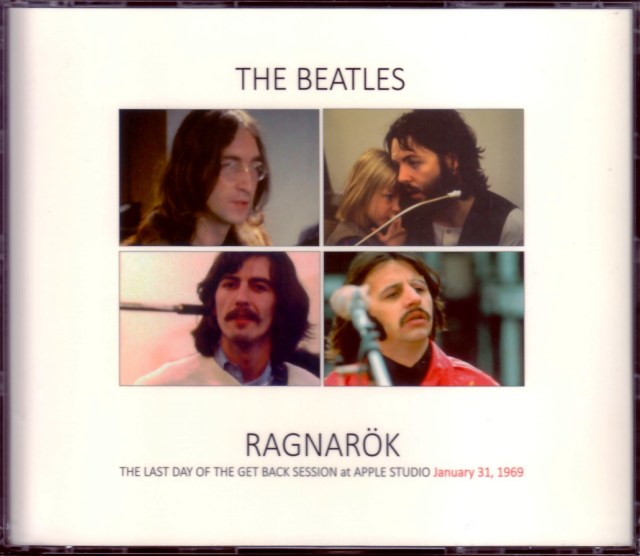

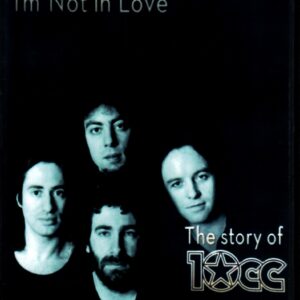
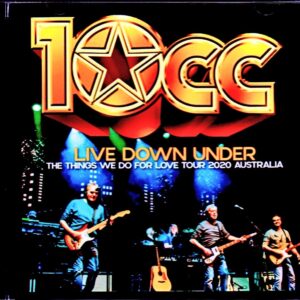
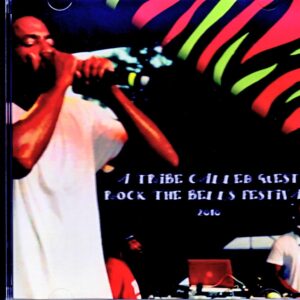
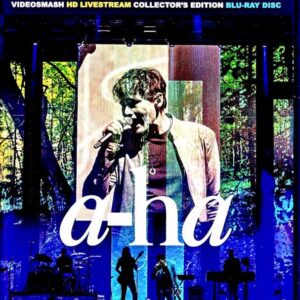
Reviews
There are no reviews yet.